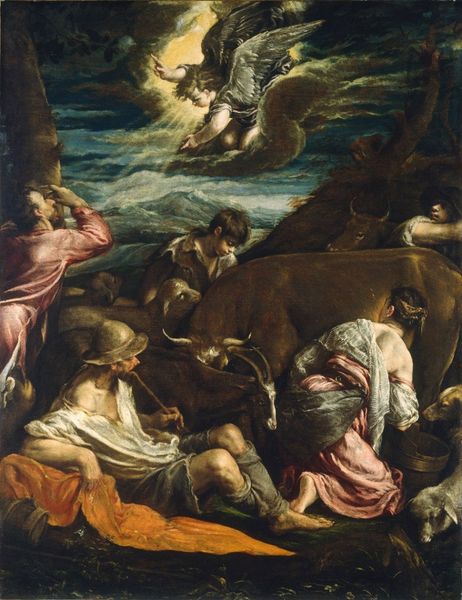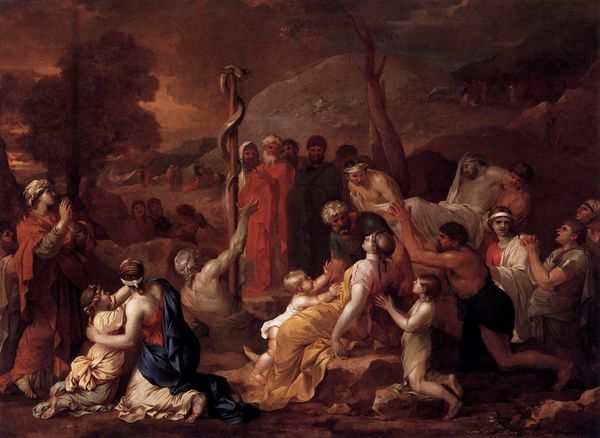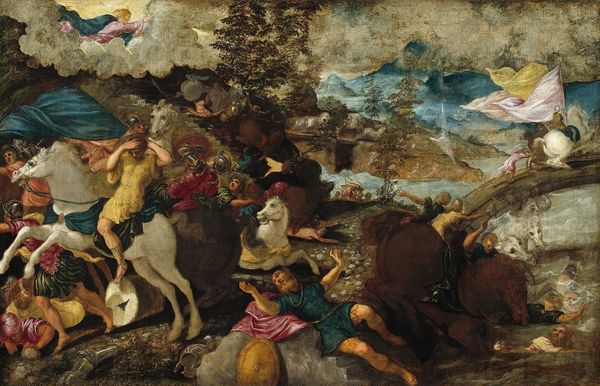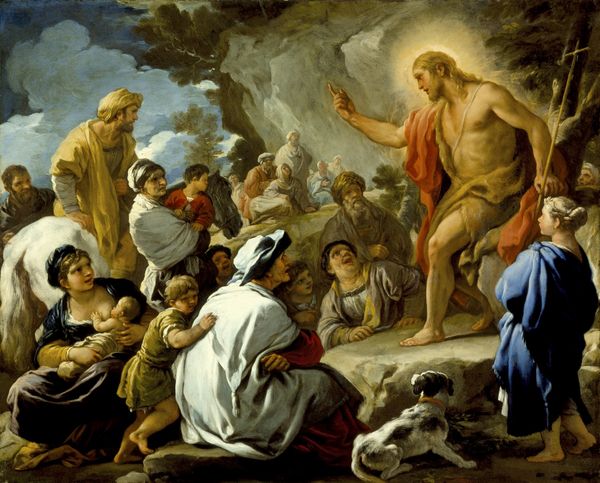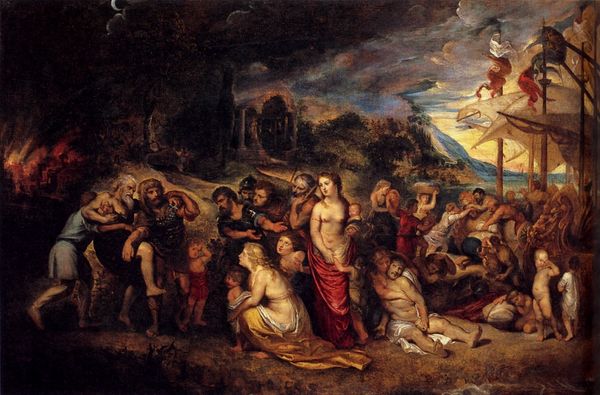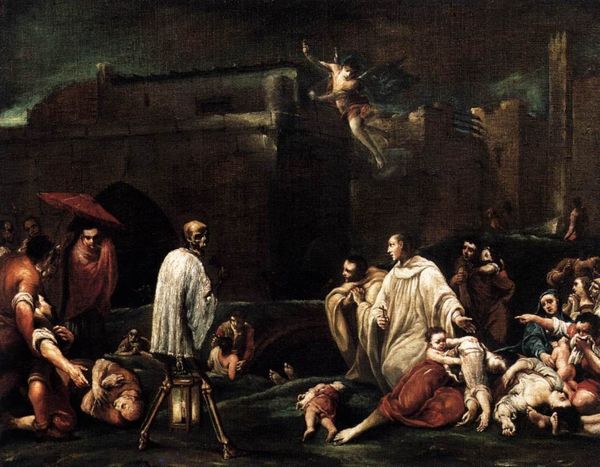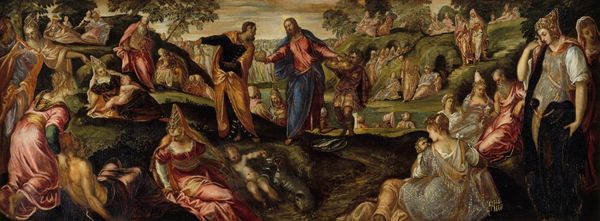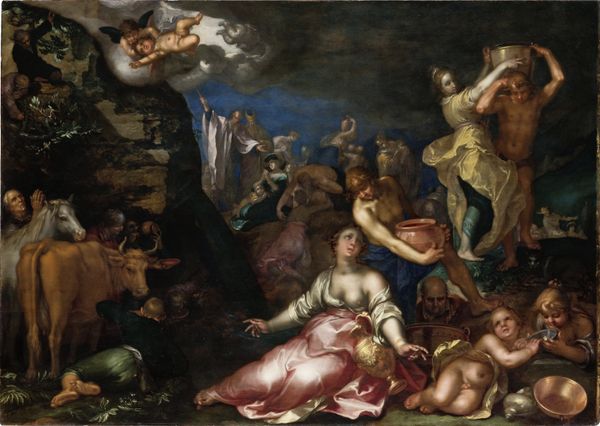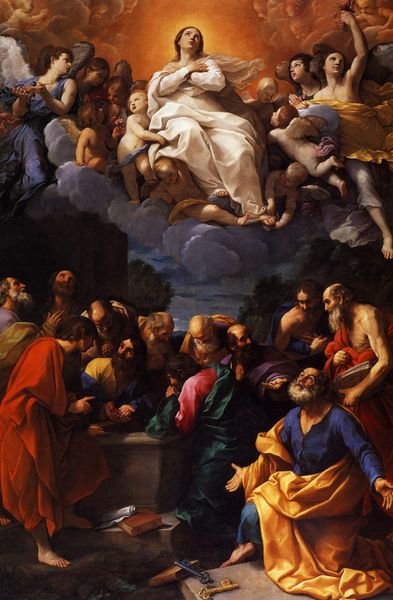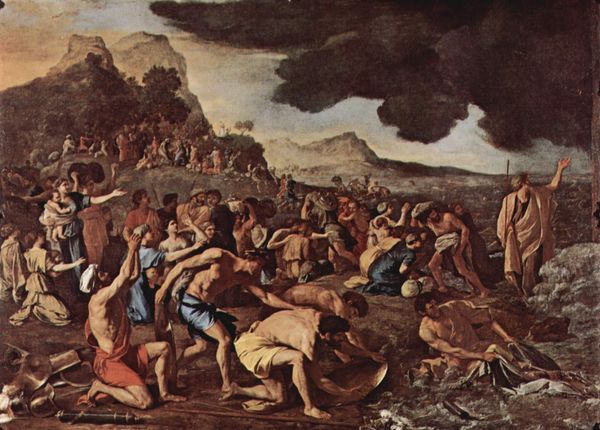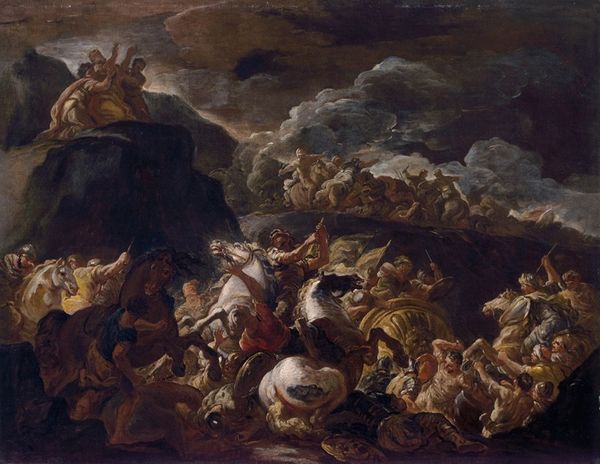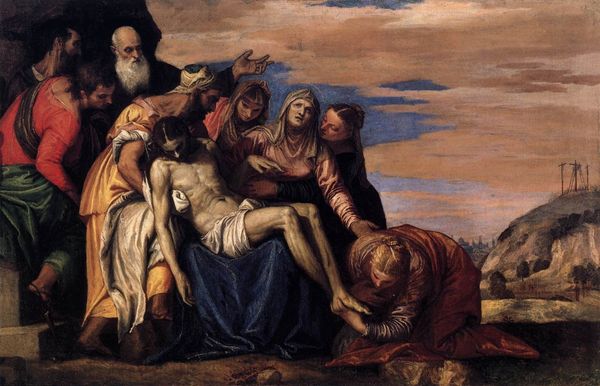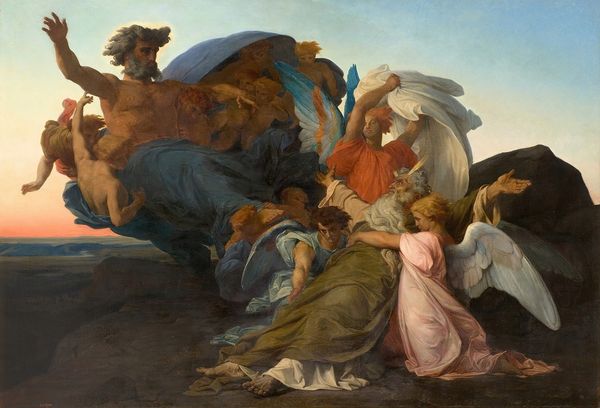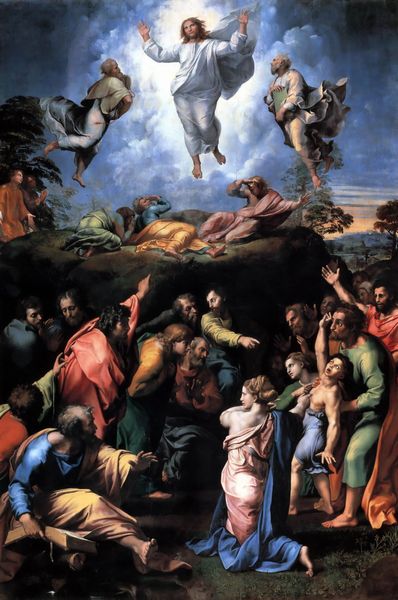
painting, oil-paint
#
venetian-painting
#
narrative-art
#
painting
#
oil-paint
#
landscape
#
figuration
#
oil painting
#
mythology
#
genre-painting
#
history-painting
#
italian-renaissance
Copyright: Public domain
Jacopo Bassano painted ‘The Journey of Jacob’ in Italy, sometime in the latter half of the 16th century. Rather than an image of Biblical heroism, Bassano presents us with an intimate portrayal of a family’s nomadic life. In a departure from traditional Renaissance idealism, Bassano infuses the scene with a distinctly Venetian sensibility, emphasizing the everyday realities of labour. We see women tending to children, men herding sheep, and animals laden with possessions, all set against a backdrop reminiscent of the Venetian countryside. Bassano came from a family of artists. He directed a workshop that efficiently produced paintings for the local market. Here, the artist perhaps elevates the family’s economic achievements by conflating it with a popular biblical story. The painting reflects the social fabric of its time, where family, work, and faith were interwoven. Analyzing such works through the lens of social history allows us to appreciate the complex interplay between artistic expression and the broader cultural milieu. By examining archival records, personal letters, and other primary sources, we can gain deeper insights into the social conditions that shaped artistic production during the Renaissance.
Comments
No comments
Be the first to comment and join the conversation on the ultimate creative platform.
